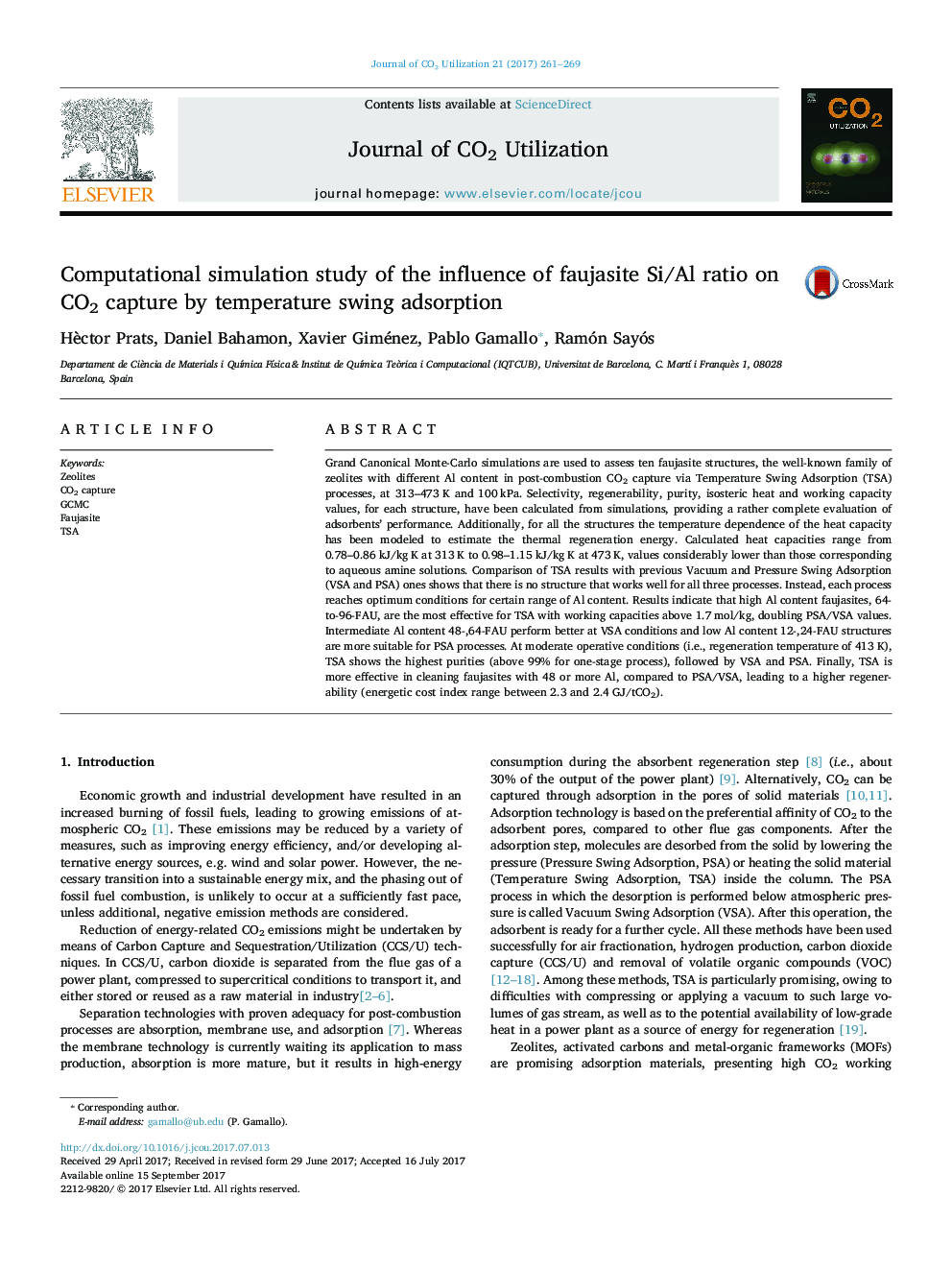| کد مقاله | کد نشریه | سال انتشار | مقاله انگلیسی | نسخه تمام متن |
|---|---|---|---|---|
| 6456068 | 1419841 | 2017 | 9 صفحه PDF | دانلود رایگان |

- Influence of Si/Al-ratio in Faujasites for CO2 capture in TSA by GCMC.
- Post-combustion mixtures were studied for application in TSA processes.
- Capture operative conditions were evaluated from an engineering point of view.
- Evaluation of selectivity, regeneration, purity, isosteric heat, working capacity.
- 64-FAU to 96-FAU structures are the best candidates for TSA processes.
Grand Canonical Monte-Carlo simulations are used to assess ten faujasite structures, the well-known family of zeolites with different Al content in post-combustion CO2 capture via Temperature Swing Adsorption (TSA) processes, at 313-473 K and 100 kPa. Selectivity, regenerability, purity, isosteric heat and working capacity values, for each structure, have been calculated from simulations, providing a rather complete evaluation of adsorbents' performance. Additionally, for all the structures the temperature dependence of the heat capacity has been modeled to estimate the thermal regeneration energy. Calculated heat capacities range from 0.78-0.86 kJ/kg K at 313 K to 0.98-1.15 kJ/kg K at 473 K, values considerably lower than those corresponding to aqueous amine solutions. Comparison of TSA results with previous Vacuum and Pressure Swing Adsorption (VSA and PSA) ones shows that there is no structure that works well for all three processes. Instead, each process reaches optimum conditions for certain range of Al content. Results indicate that high Al content faujasites, 64-to-96-FAU, are the most effective for TSA with working capacities above 1.7 mol/kg, doubling PSA/VSA values. Intermediate Al content 48-,64-FAU perform better at VSA conditions and low Al content 12-,24-FAU structures are more suitable for PSA processes. At moderate operative conditions (i.e., regeneration temperature of 413 K), TSA shows the highest purities (above 99% for one-stage process), followed by VSA and PSA. Finally, TSA is more effective in cleaning faujasites with 48 or more Al, compared to PSA/VSA, leading to a higher regenerability (energetic cost index range between 2.3 and 2.4 GJ/tCO2).
246
Journal: Journal of CO2 Utilization - Volume 21, October 2017, Pages 261-269